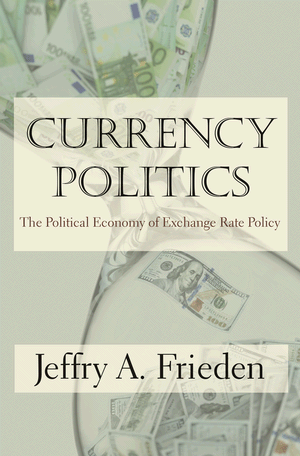Jeffry A. Frieden
320 pages
Publisher: Princeton University Press (December 28, 2014)
Language: English
PDF, 4.17MB
The exchange rate is the most important price in any economy, since it affects all other prices. Exchange rates are set, either directly or indirectly, by government policy. Exchange rates are also central to the global economy, for they profoundly influence all international economic activity. Despite the critical role of exchange rate policy, there are few definitive explanations of why governments choose the currency policies they do. Filled with in-depth cases and examples, Currency Politics presents a comprehensive analysis of the politics surrounding exchange rates.
Identifying the motivations for currency policy preferences on the part of industries seeking to influence politicians, Jeffry Frieden shows how each industry’s characteristics—including its exposure to currency risk and the price effects of exchange rate movements—determine those preferences. Frieden evaluates the accuracy of his theoretical arguments in a variety of historical and geographical settings: he looks at the politics of the gold standard, particularly in the United States, and he examines the political economy of European monetary integration. He also analyzes the politics of Latin American currency policy over the past forty years, and focuses on the daunting currency crises that have frequently debilitated Latin American nations, including Mexico, Argentina, and Brazil.
With an ambitious mix of narrative and statistical investigation, Currency Politics clarifies the political and economic determinants of exchange rate policies.
Jeffry A. Frieden is professor of government at Harvard University. His books include Lost Decades: The Making of America’s Debt Crisis and the Long Recovery; World Politics: Interests, Interactions, Institutions; Global Capitalism: Its Fall and Rise in the Twentieth Century (all Norton); and Debt, Development, and Democracy: Modern Political Economy and Latin America, 1965–1985 (Princeton).
Table of Contents
Preface vii
Acknowledgments xi
Introduction The Political Economy of Currency Choice 1
Chapter 1 A Theory of Currency Policy Preferences 19
Chapter 2 The United States: From Greenbacks to Gold, 1862–79 49
Chapter 3 The United States: Silver Threats among the Gold, 1880–96 104
Chapter 4 European Monetary Integration: From Bretton Woods to the Euro and Beyond 137
Chapter 5 Latin American Currency Policy, 1970–2010 186
Chapter 6 The Political Economy of Latin American Currency Crises 220
Chapter 7 The Politics of Exchange Rates: Implications and Extensions 246
Conclusions 264
References 267
Index 283

Download:
 Currency Politics - The Political Economy of Exchange Rate Policy.pdf
(4.18 MB)
Currency Politics - The Political Economy of Exchange Rate Policy.pdf
(4.18 MB)




 雷达卡
雷达卡








 京公网安备 11010802022788号
京公网安备 11010802022788号







